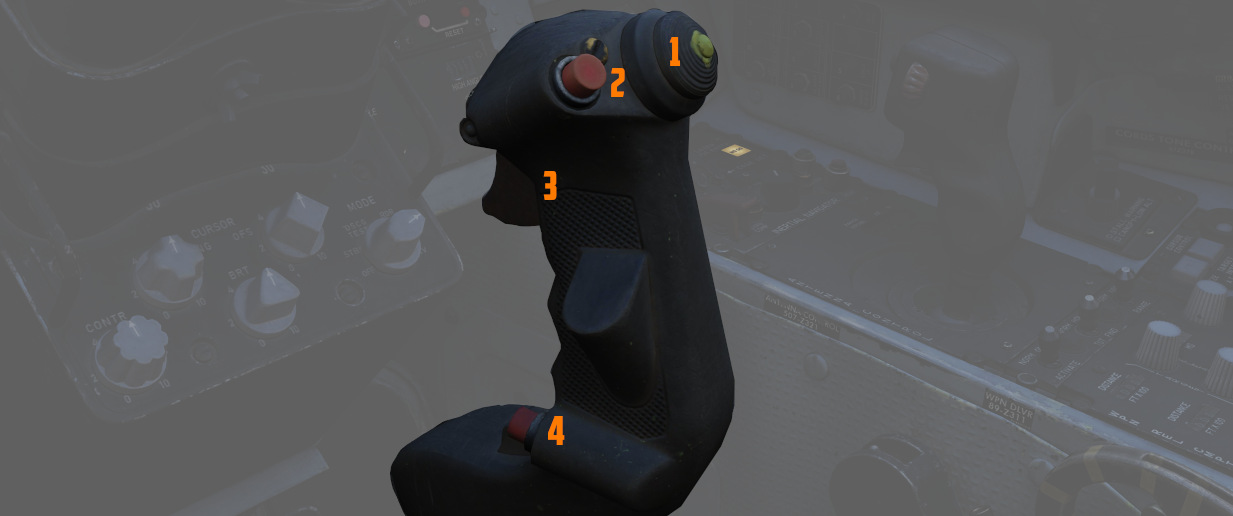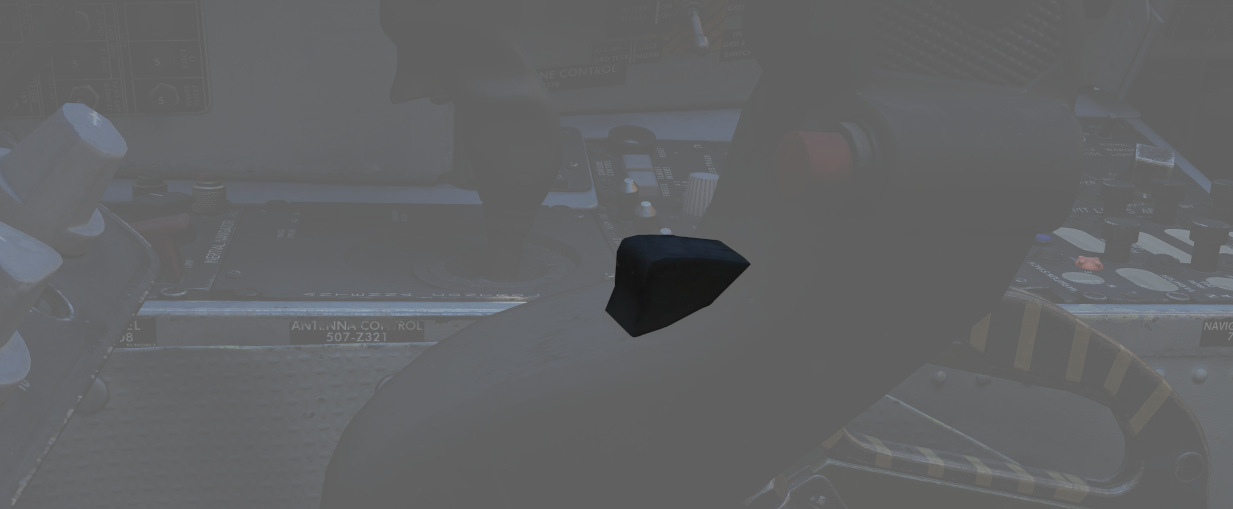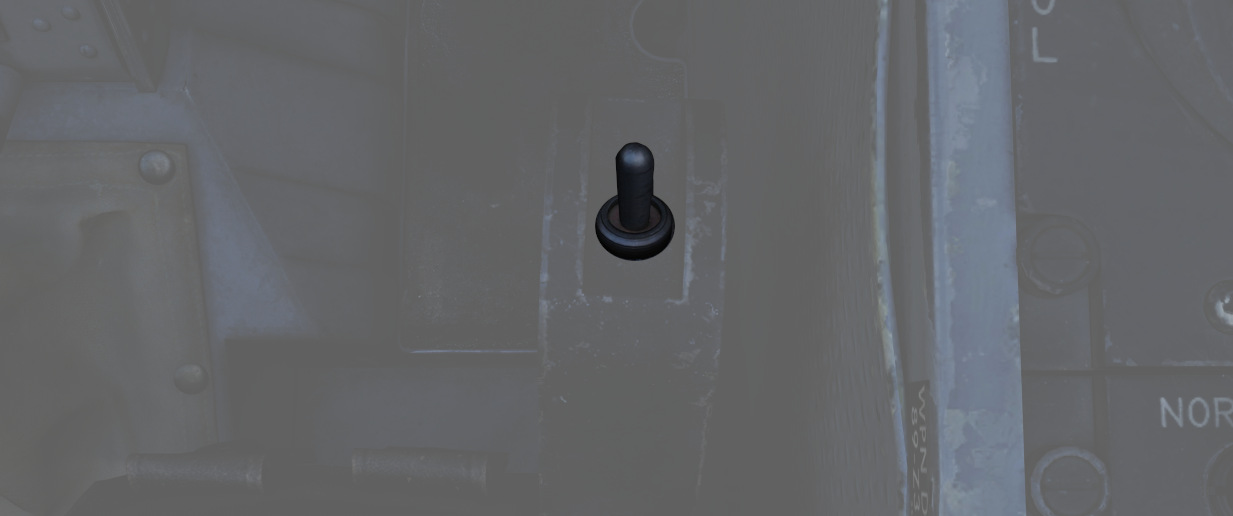Stick and Seat
Stick

A control stick is provided in both cockpits, with near-uniform switchology between the two.
The stick can be hidden by clicking on its base.
Trim Hat
A Trim Control (
Trigger and Bomb Button
Weapons are deliverable through both a 2-stage Trigger (
The first stage of the trigger activates the gun camera for recording forward footage.
Nose Wheel Steering Button
Both sticks carry a Nose Wheel Steering (NWS or also NGS) button (
Holding the button down permits the crew member to steer the aircraft using the rudder pedals. See 3.1.3 Gear & Ground handling, Nose Gear Steering section for details.
Emergency Quick Release Lever

An Emergency Quick Release lever on each stick is available to immediately deactivate the anti-skid system, the automatic flight control system (AFCS), stability augmentation (STAB AUG) and the aileron-rudder interconnect (ARI).
See 3.1.3 Gear & Ground handling, Anti-Skid section for details.
Seat

The seat allows the crew to eject out of the plane by pulling either the cord between the legs or above the head.
See the 3.13 Emergency system section for details on the seat and ejection mechanism.
Seat Position

The vertical position of the seat can be changed in either direction for about 5cm using this spring-loaded switch on the right side of the seat.
For landing, it is advisable to put the seat in the most upward position for better visibility.
The operation of the motor must be limited to 30 seconds within 10 minutes to prevent it from overheating and breaking.